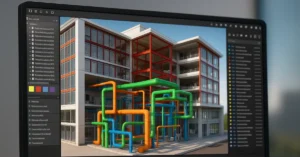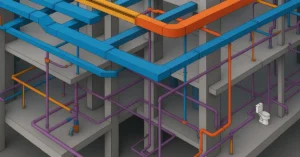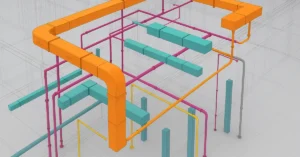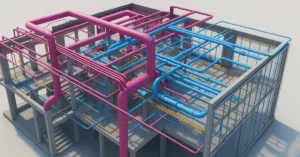Exploring the Raw and Powerful Brutalist Buildings in Santiago
Santiago, the capital of Chile, is a city of architectural contrasts, blending colonial heritage with cutting-edge modernism. Among its diverse urban landscape, Brutalist architecture stands as a bold and striking style, characterized by raw concrete, geometric shapes, and functional design. These structures emerged in response to the city’s urban expansion, reflecting an era of modernist experimentation. In this guide, we explore the most remarkable Brutalist buildings in Santiago and their significance.
What is Brutalist Architecture?
Brutalism is a post-war architectural movement that emphasizes exposed concrete (“béton brut”), rigid geometric forms, and utilitarian aesthetics. Originating in the mid-20th century, it was widely adopted for institutional and civic buildings, offering both durability and visual impact. Santiago embraced this style as part of its modernization efforts, leading to the construction of some of its most visually compelling structures.
Santiago’s Must-See Brutalist Buildings
1. Diego Portales Building
Location: Av. Libertador Bernardo O’Higgins 1189, Santiago, Chile
Architects: Bresciani, Valdés, Castillo & Huidobro
Year: 1972
Originally designed as a conference center, the Diego Portales Building became a political landmark, housing Chile’s military government after the 1973 coup. Its imposing concrete structure and heavy, block-like design make it one of the most emblematic Brutalist buildings in Santiago.
2. UNCTAD III (Gabriela Mistral Cultural Center)
Location: Av. Libertador Bernardo O’Higgins 227, Santiago, Chile
Architects: José Covacevich and team
Year: 1972
Originally constructed as the UNCTAD III conference center, this building was later transformed into the Gabriela Mistral Cultural Center. Its Brutalist elements, including exposed concrete and modular design, reflect both its political history and its ongoing role as a cultural hub.
3. Villa Frei Housing Complex
Location: Ñuñoa, Santiago, Chile
Architects: Ministry of Housing and Urbanism of Chile
Year: 1968
A unique example of Brutalist residential architecture, Villa Frei combines functionality with striking concrete structures. Its design prioritizes open communal spaces while showcasing the raw, unpolished aesthetic typical of Brutalism.
4. Faculty of Architecture and Urbanism, University of Chile
Location: Portugal 84, Santiago, Chile
Architect: José Llano
Year: 1970
This faculty building stands as one of the most striking Brutalist academic institutions in Santiago. Its exposed concrete facade, stacked modular forms, and geometric precision embody the essence of Brutalist design, making it a landmark within the university campus.
5. Medical School, Pontifical Catholic University of Chile
Location: Marcoleta 367, Santiago, Chile
Architects: Emilio Duhart and Christian de Groote
Year: 1974
This imposing structure is a testament to the influence of Brutalism in educational architecture. The concrete massing, deep recesses, and angular composition reflect the movement’s principles of honesty in materials and functionality.
The Influence of Brutalism on Santiago’s Urban Landscape
Brutalism in Santiago emerged during a period of rapid urban transformation. The style’s focus on cost-effective materials and functional design made it an attractive choice for government, educational, and residential projects. These buildings, often polarizing in their aesthetics, continue to define key parts of the city’s architectural identity.
Preservation vs. Demolition: The Debate Over Brutalism
Brutalist buildings in Santiago have faced mixed reactions over the years. While some view them as historical and architectural treasures, others criticize their stark and monolithic appearance. Efforts to preserve these structures are growing, as architects and historians recognize their cultural significance and advocate for their adaptation rather than destruction.
Why You Should Appreciate Brutalism in Santiago
Brutalist architecture may not be universally loved, but it offers a raw and unapologetic representation of modernist ideals. These buildings tell a story of Santiago’s development, political shifts, and architectural ambitions. Exploring these structures offers a deeper understanding of the city’s evolution and the bold aesthetic choices that shaped its urban landscape.
For architecture enthusiasts, a tour of Santiago’s Brutalist landmarks is a journey through an era of bold experimentation and urban expansion. These buildings stand as powerful reminders of a time when concrete was not just a material but a statement of strength and vision.
Final Thoughts
Brutalist buildings in Santiago continue to spark debate and admiration. Whether you see them as architectural masterpieces or relics of a bygone era, their impact on the city’s skyline is undeniable. By exploring these striking structures, you can appreciate the power and innovation behind one of the most distinctive architectural movements in Santiago’s history.
If you’re interested in learning more about architecture firms in Europe, check out this comprehensive list of the top 50 firms compiled by Archgyan. From innovative startups to long-established industry leaders, this list has it all. Take a look and discover some of the most inspiring and influential architecture firms in Europe today.
If you’re interested in architecture and want to learn more about this amazing field, subscribe to our podcast on youtube
For more SketchUp tutorials, head to https://www.sketchupguru.com










